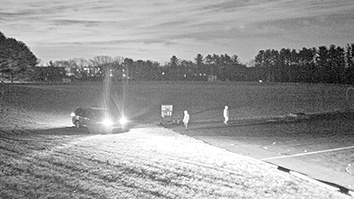Citation
Rosenbloom, M. J., Sassoon, S. A., Pfefferbaum, A., & Sullivan, E. V. (2009). Contribution of regional white matter integrity to visuospatial construction accuracy, organizational strategy, and memory for a complex figure in abstinent alcoholics. Brain imaging and behavior, 3(4), 379-390.
Abstract
Visuospatial construction ability as used in drawing complex figures is commonly impaired in chronic alcoholics, but memory for such information can be enhanced by use of a holistic drawing strategy during encoding. We administered the Rey-Osterrieth Complex Figure Test (ROCFT) to 41 alcoholic and 38 control men and women and assessed the contribution of diffusion tensor imaging (DTI) measures of integrity of selected white matter tracts to ROCFT copy accuracy, copy strategy, and recall accuracy. Although alcoholics copied the figure less accurately than controls, a more holistic strategy at copy was associated with better recall in both groups. Greater radial diffusivity, reflecting compromised myelin integrity, in occipital forceps and external capsule was associated with poorer copy accuracy in both groups. Lower FA, reflecting compromised fiber microstructure in the inferior cingulate bundle, which links frontal and medial temporal episodic memory systems, was associated with piecemeal copy strategy and poorer immediate recall in the alcoholics. The correlations were generally modest and should be considered exploratory. To the extent that the inferior cingulate was relatively spared in alcoholics, it may have provided an alternative pathway to the compromised frontal system for successful copy strategy and, by extension, aided recall.
Keywords: Visuospatial construction, Strategy, Rey-osterrieth complex figure test, Alcoholism, White matter circuits


